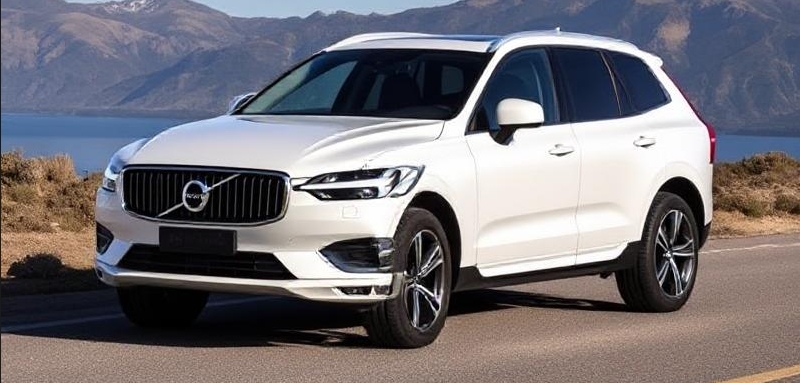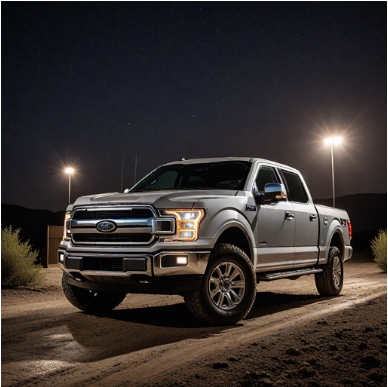The Evolution of the Volvo XC60: A Comprehensive Overview
Volvo Cars, a brand synonymous with safety and innovation, launched the XC60 in 2008. A mid-sized luxury SUV, the XC60 was designed to capture the spirit of the Swedish ethos: practicality merged with aesthetic simplicity. Over the years, the XC60 has undergone several transformations to adapt to the changing automotive landscape, ensuring that it remains relevant, competitive, and beloved by its drivers. This article delves into the evolution of the Volvo XC60 from its inception to the present day, examining its various models and trim levels throughout the years.
The First Generation: 2008-2017
Introduction
The XC60 made its debut at the Geneva Motor Show in March 2008, aiming to combine Volvo’s upscale image with the growing popularity of SUVs. Based on Volvo’s P3 platform, which it shares with the S80 and V70, the XC60 was positioned as a smaller alternative to the XC90, appealing to younger families and outdoor enthusiasts.
2009-2017: Model Offerings and Trim Levels
From 2009 to 2017, the XC60 was offered in various trims and with multiple engine configurations. The most notable trims included:
- Kinetic: This was the base model, offering essential features such as 17-inch alloy wheels, a multi-function steering wheel, and an infotainment system with a CD player and a radio.
- Momentum: This trim added more comfort and luxury features, including dual-zone climate control, upgraded audio systems, and leather upholstery.
- R-Design: A sportier variant, the R-Design featured unique styling elements, sport seats, and suspension tweaks for a more engaging drive.
- Inscription: Representing the pinnacle of luxury, the Inscription included high-grade materials, advanced safety features, and exclusive design elements.
Engine Choices
The first-generation XC60 featured a range of engine options, including:
- 2.5L Turbocharged I5: This was the entry-level engine providing a balanced performance for everyday driving.
- 3.2L I6: A more powerful alternative, delivering a smoother performance and greater towing capacity.
- 2.0L Turbocharged I4: Introduced later, this option emphasized fuel efficiency without sacrificing performance.
- D4 and D5 Diesel Engines: For those who prioritized fuel economy, Volvo offered diesel variants with impressive torque.
Safety Features
Volvo has always excelled in safety, and the XC60 was no exception. Advanced safety features, including City Safety (a low-speed collision avoidance system), lane departure warning, and adaptive cruise control, became industry benchmarks.
The Second Generation: 2017-Present
Introduction
Launched in 2017, the second-generation XC60 continued Volvo’s commitment to safety, style, and sustainability. Built on the Scalable Product Architecture (SPA), the new XC60 showcased a sleeker design, advanced technology, and electrification options.
2018-Present: Model Offerings and Trim Levels
The 2018 model year saw a restructuring of trim levels, which were subject to changes based on specific market regions but generally included:
- Momentum: This is the entry point into the XC60 range, emphasizing modern design, comfort, and essential tech features.
- R-Design: Retaining its sporty appeal, the R-Design featured enhanced aesthetics such as sportier seating, gloss black accents, and a sport chassis for improved handling.
- Inscription: As in the previous generation, this trim was designed for customers seeking a more luxurious experience, offering premium materials, advanced sound systems, and exclusive finishes.
- Polestar Engineered: This performance-oriented variant features a T8 plug-in hybrid powertrain and enhancements to suspension and brakes, aimed at delivering an exhilarating driving experience.
Engine Choices
The second generation diversified its powertrains, including:
- T5: A turbocharged 2.0L inline-four engine generating about 250 hp, providing a responsive and efficient drive.
- T6: This version added a supercharger to the T5 engine, offering up to 316 hp for those seeking additional power.
- T8 Polestar Engineered: Combining a 2.0L supercharged and turbocharged engine with an electric motor, this plug-in hybrid variant provided an impressive 400 hp, tackling both performance and environmental concerns.
Safety Features
Continuing its legacy of safety, the second-generation XC60 was equipped with an extensive suite of features, including:
- Pilot Assist: An advanced semi-autonomous driving feature that assists with steering, accelerating, and braking under certain conditions.
- Run-off Road Mitigation: A safety system that detects when the vehicle is unintentionally leaving the roadway and takes measures to guide it back.
- Blind Spot Information System (BLIS): Offering enhanced safety while changing lanes, this system alerts drivers to vehicles in their blind spots.
Design and Technology
The XC60’s interior and exterior underwent significant redesigns that emphasized minimalist Scandinavian aesthetics. The use of premium materials, large touchscreen infotainment systems, and integration of advanced connectivity features became hallmarks of the XC60’s appeal.
.
MANY auto lovers not only spend time in their garages to tinker on their autos, but have other projects going on in there as well. Wood working is a popular pastime for the creative type of individual. Not sure what to make next? Or thinking about getting into this kind of hobby? There’s lots of possibilities… Here’s some of them…

.
The Current Landscape and Future Directions
2023 and Beyond
As of 2023, the Volvo XC60 continues to grow in popularity, adapting to the ever-changing automotive landscape. The introduction of fully electric models, under the Volvo Recharge brand, reflects a commitment to sustainability and ongoing innovation. Changes in trim offerings and powertrain options are likely to evolve in line with consumer preferences, regulatory requirements, and technological advancements.
Future Model Expectations
Looking ahead, the XC60 is expected to:
- Embrace Full Electrification: With the global automotive market shifting towards electric vehicles, future generations of the XC60 may see the introduction of fully electric variants beyond the current plug-in hybrid models.
- Enhance Autonomous Driving Features: Continuing to build on advanced driver-assistance systems, future XC60 iterations may offer even more sophisticated autonomous features.
- Sustainability Commitments: As part of Volvo’s vision for the future, there will be a greater focus on sustainable materials and environmentally friendly manufacturing processes.
Conclusion
The Volvo XC60’s evolution from its introduction in 2008 to the current models reflects the brand’s dedication to safety, performance, and sustainability. With each generation, the XC60 has adapted to meet the needs of its drivers while remaining true to its core values. As we look towards the future, the XC60 is poised to continue its legacy as a leader in the luxury SUV segment, combining cutting-edge technology with a commitment to environmental responsibility. The journey of the XC60 showcases Volvo’s continuous innovation, ensuring that this iconic model remains a top choice for discerning drivers worldwide.







